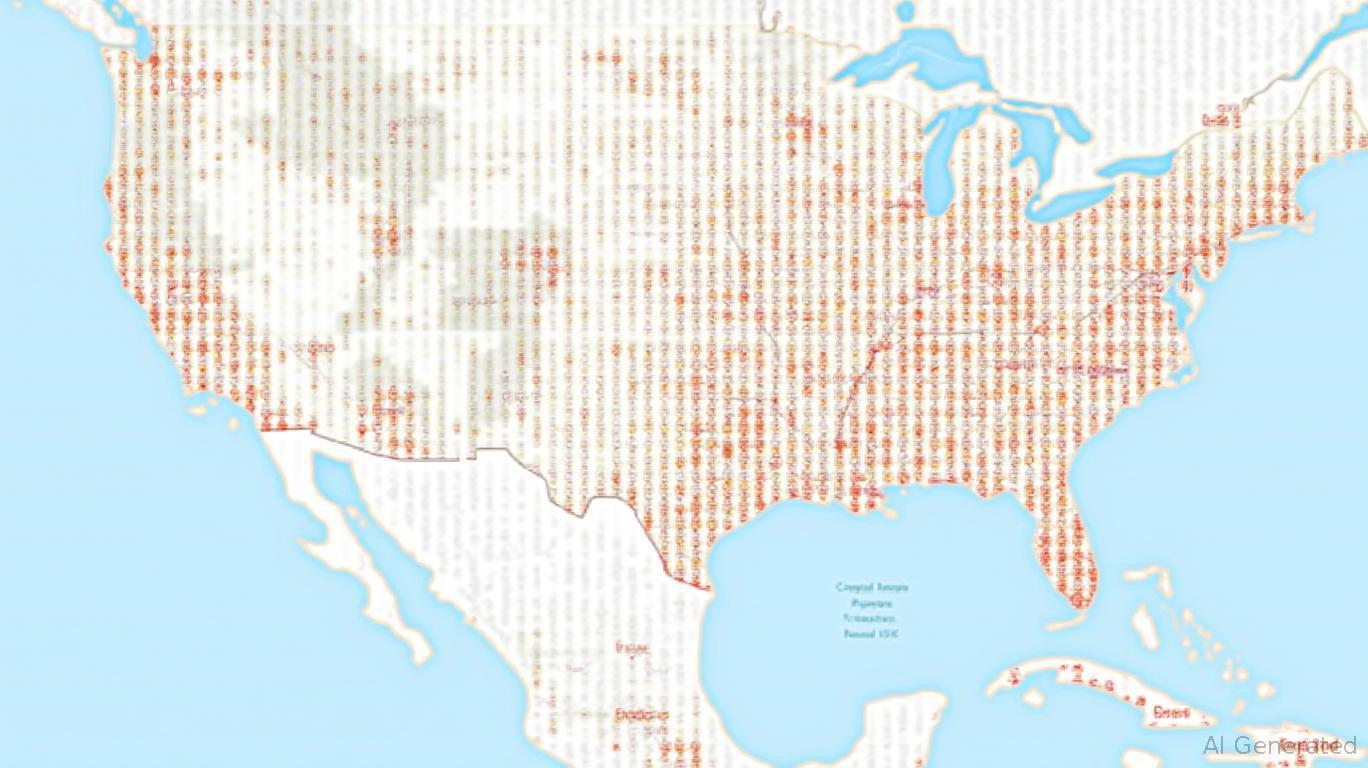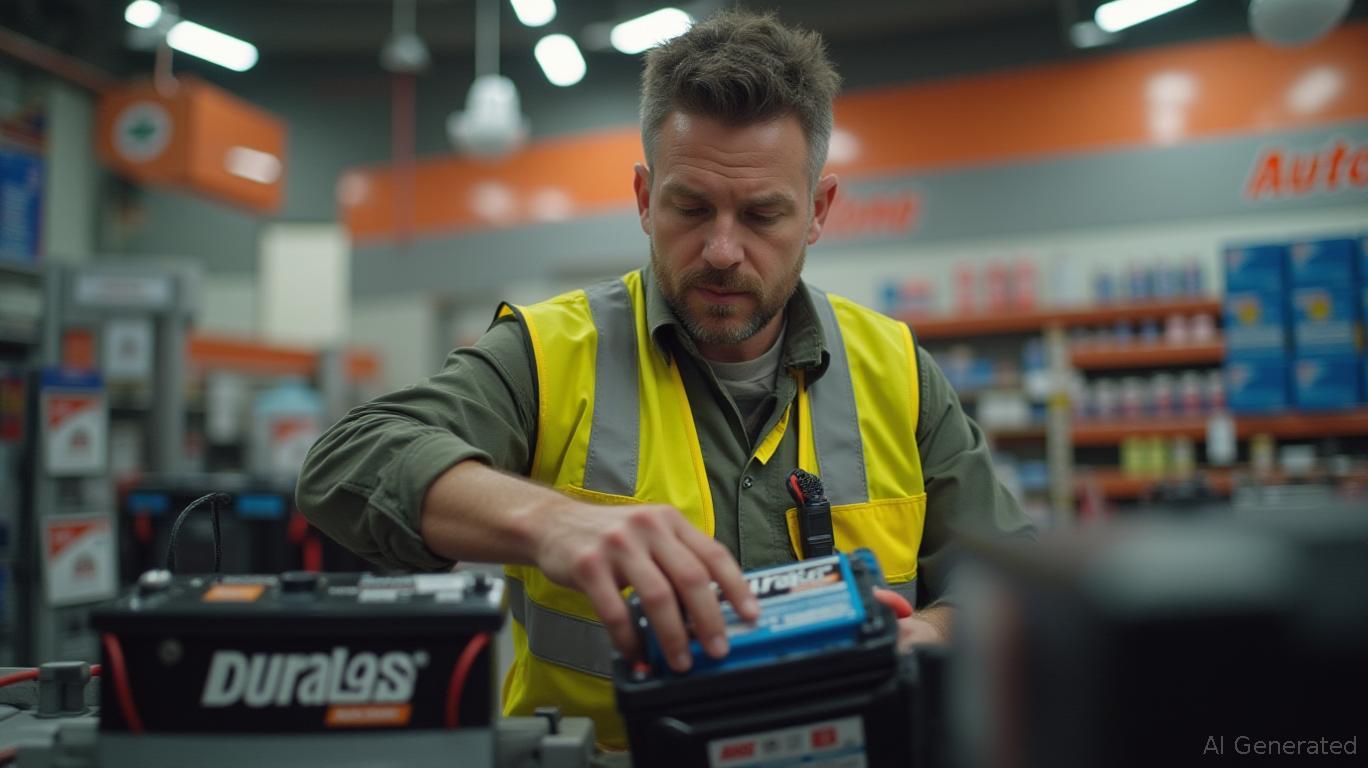AutoZone: A Fortress in a Fragmented World
As global supply chains fray and trade tensions escalate, investors are seeking companies that thrive in a deglobalizing economy.
(AZO) stands out as a rare defensive growth equity, leveraging its oligopolistic dominance, fortress balance sheet, and secular tailwinds to insulate itself from macroeconomic headwinds. Here's why this automotive aftermarket leader is a buy for the next decade—and why its domestic focus makes it a hedge against trade wars.
The Oligopoly Advantage: When Geography Becomes a Moat
AutoZone's 32.3% visit share in the U.S. auto parts retail market (per 2024 data) underscores its entrenched position. Alongside O'Reilly and
, these three firms control nearly 60% of customer visits, a level of concentration unmatched in most retail sectors. But AutoZone's edge isn't just scale—it's geographic precision. With 7,516 stores (up 4% year-on-year), AutoZone dominates high-traffic corridors where time-sensitive repairs are critical. In a world where consumers increasingly prioritize convenience over cost, this network acts as a physical barrier to disruption.Moreover, its DIFM (Do-It-For-Me) segment—serving professional technicians—grows at 10% annually, outpacing peers. This segment's resilience in recessions (mechanics keep working; DIYers cut back) adds a countercyclical layer to its earnings.
Cash Flow: A Shield Against Deglobalization
AutoZone's financials are a masterclass in defensive resilience. Despite margin pressures from rising supply chain costs, its $2.2 billion cash pile and 92.74% institutional ownership reflect investor confidence. Key metrics:
- Net income: $487.9 million in Q2 2025, down 5.3% Y/Y but driven by one-time costs.
- Free cash flow: Consistently above $1 billion annually, enabling share buybacks ($329.4 million in Q2 alone).
- Debt: Minimal, with a 0.2x net debt/EBITDA ratio, allowing it to weather credit crunches.
The company's vendor financing model (net inventory per store at -$161,000) further reduces working capital needs, a critical advantage in a cost-conscious environment.
Secular Growth Drivers: Aging Cars, Expanding Horizons
The aging U.S. vehicle fleet (average age at a record 12.4 years) is a tailwind. More repairs mean more demand for parts—a trend AutoZone exploits through its 9.5% constant-currency sales growth in Mexico and Brazil. International expansion, particularly in fast-growing Latin American markets, adds a low-cost lever to its growth. Meanwhile, its 45 new stores opened in Q2 (28 in the U.S., 13 in Mexico) signal disciplined geographic penetration.

Why Deglobalization Favors AutoZone
In a world of trade wars, AutoZone's domestic dominance is a hedge. Over 80% of revenue comes from the U.S., where its stores and suppliers are concentrated. This insulates it from tariff volatility (e.g., Chinese-made parts) and supply chain disruptions. Competitors like NAPA, which rely more on global sourcing, face higher risks.
Additionally, the shift to local manufacturing for EV components (a U.S. policy priority) could benefit AutoZone as it adapts its inventory to serve electric vehicle repair needs—a $40 billion market by 2030.
Valuation: Expensive, but Justified?
At a P/E of 22x (vs. 18x in 2020), AutoZone is not cheap. However, its 5-year EPS CAGR of 8% and 20% operating margins (despite recent dips) justify a premium. Analysts at BofA see a $4,800 price target (up from $3,000 in 2022), citing its ability to outperform in fragmented markets.
Risks to Consider
- Margin pressure: Rising wages and SG&A costs could crimp profits.
- EV adoption: While a long-term opportunity, near-term demand for legacy parts remains stronger.
- Insider selling: CEO Philip Daniele's $42M sale in late 2024 could spook short-term traders.
The Bottom Line: Buy the Dip, Own the Cycle
AutoZone is the Goldilocks stock for 2025: not too hot to overpay for, not too cold to ignore. Its oligopoly, cash flow, and secular tailwinds make it a rare equity that thrives in deglobalization. Investors should view dips below $2,800 as buying opportunities—a price where its P/E contracts to 19x, closer to historical averages.
For the long term, AutoZone's domestic focus and aging-vehicle theme are countercyclical anchors. Even as trade wars rage, mechanics will still need batteries, brakes, and belts—parts AutoZone delivers with unrivaled speed. This isn't just a stock to own; it's a fortress to defend.

Comments
No comments yet